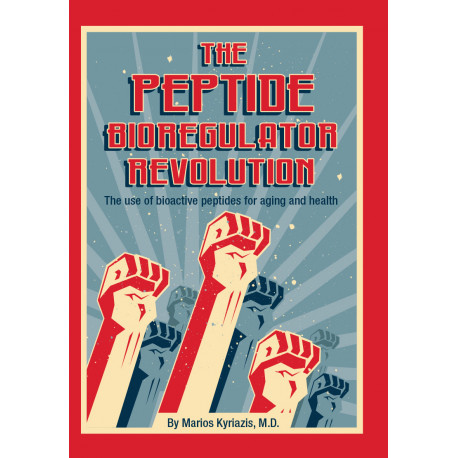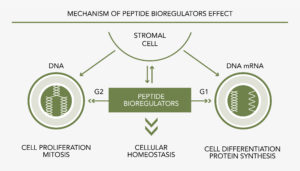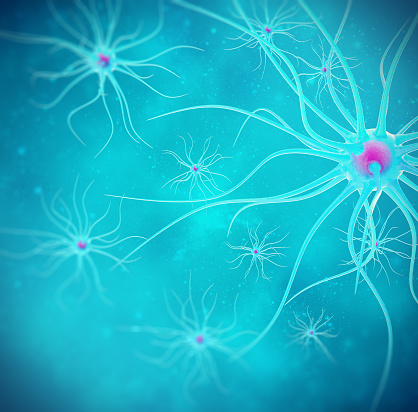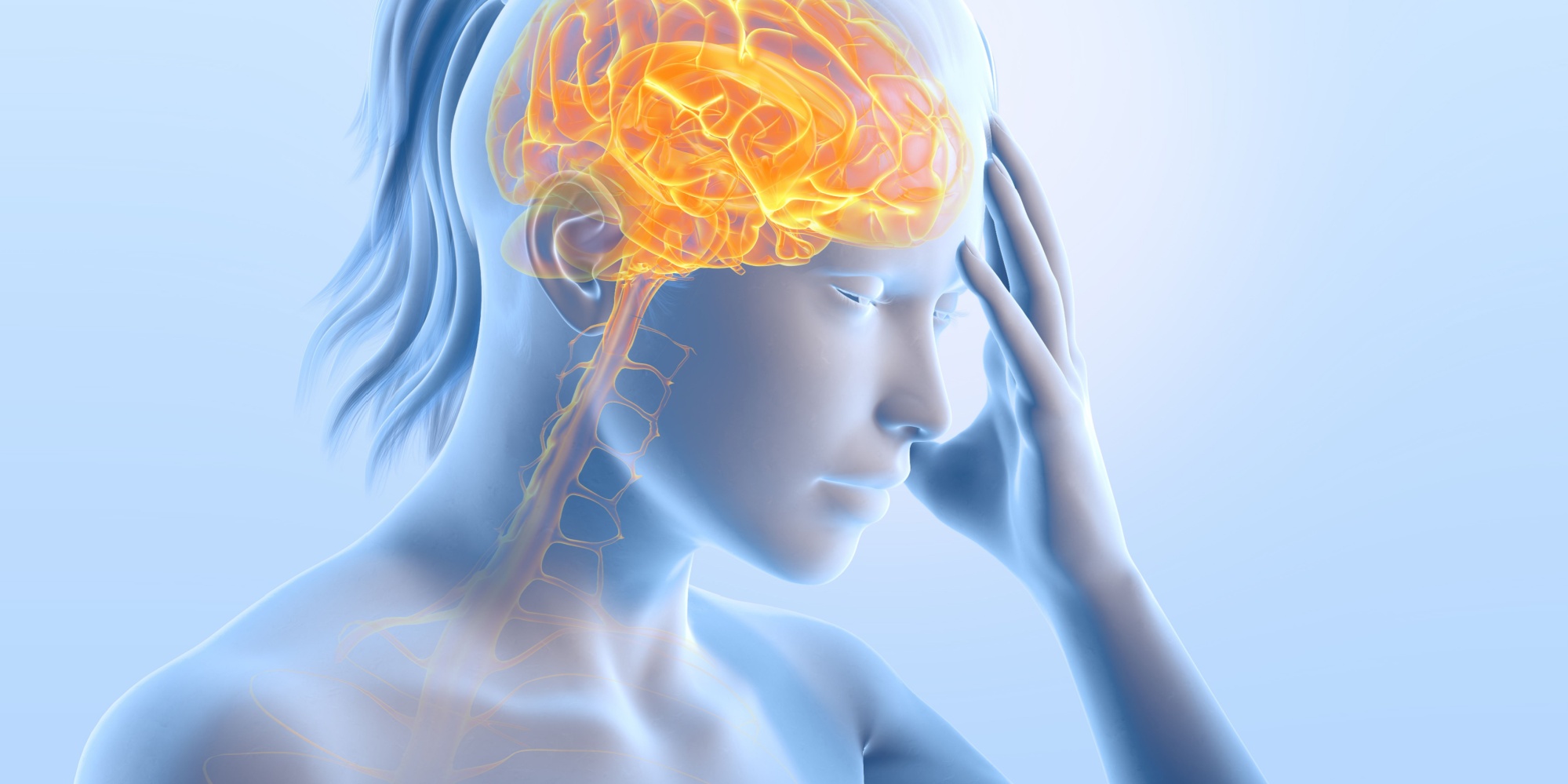
The Peptide Bioregulator Revolution
September 28th, 2018By Marios Kyriazis MD
This summer, my new book; ‘The Peptide Bioregulator Revolution’ is being released. The book subtitled; ‘The use of bioactive peptides for aging and health’, is a review of available scientific evidence regarding the role of bio-active peptides (i.e. short or long sequences of amino acids), which can be used in several health conditions, and in aging itself. There exist quite a few peptides, both natural and synthetic, which have a regulatory action on many parts of the metabolism. Many details of this action have been studied by Prof. Vladimir Khavinson, Director of the Saint-Petersburg Institute of Bioregulation and Gerontology, who, together with his team, is the main proponent of the use of bio-active peptides.

In this book there are sections on research regarding the function of peptides as bio-regulators, as well as detailed information on the benefits of peptides in several health conditions. Examples include bone disease, circulation and cardiac problems, muscle weakness, kidney and liver conditions, and several other age-related degenerative diseases. The aim is to give a comprehensive introduction and analysis of this important subject, not only from a firm scientific perspective but also from a practical point of view.
Case study
Whilst I was writing the book, I decided to try one such bio-regulator peptide, on one of my patients to see for myself if any of the claims made have some relevance in everyday medical practice. So, here, I am going to mention a case study, not as solid scientific evidence, but as food for thought and for further discussion.
The case is with regards to one male patient aged 48 years, with diagnosed and established end-stage renal failure, of unknown etiology. Creatinine was 6 to 7 times the normal levels, and blood urea was consistently over 10 times the normal levels, together with proteinuria and anaemia. The patient was due to be admitted starting peritoneal dialysis and was on the waiting list for renal transplant. He agreed to try the renal bio-peptide Pielotax™ twice a day for 4 weeks, and the course repeated after 4 weeks, at one capsule a day for 8 weeks. His condition was stabilised and had no significant kidney-related symptoms. Peritoneal dialysis was postponed, and all blood values remain stable. This, in the absence of any other changes in his treatment, suggests that the peptides may have played a role, although this is not presented here as a firm scientific case. Nevertheless, if taken is association with other such anecdotal cases, it points at the possibility that there is indeed something positive here, something that it is endorsed by the previous positive studies of bio-peptides in the laboratory.
New research
Let me now mention some additional research, the latest scientific findings that come to support the overall thrust of the book.
A single course of treatment using a peptide that regulates the microcirculation in the brain, resulted in an improved density of the blood vessels in the pia mater (the innermost sheet of the membranes surrounding the brain). Further courses of treatment improved the blood flow to the brain by about 15%, compared to animals which were not treated. In addition, the treated animals were resistant to a subsequent interruption of oxygen to the brain (1). Although this experiment was performed on laboratory animals, it just indicates in general terms the clinical effectiveness of the bio-peptide used.
A synthetic peptide, which mirrored the structure of the natural peptide complex present in the epiphysis, was found to have similar biological effects as those of the natural one. For example, it normalised melatonin synthesis, and overall improved the retina, the vascular and immune systems. This shows that even synthetic peptides, when constructed in accordance with other naturally occurring ones, may have similar biological effects. Therefore, it may not be necessary to rely too much on extracting natural peptides from different live tissues, but we can use synthetic ones which are cheaper and easier to create (2).
One new piece of research gives an interesting glimpse into the action of bio-active peptides. Researchers have found epigenetically active peptides in a long-lived species of rat. This means that the peptides can influence the DNA of the animal, depending on stimuli originating from the environment. In other words, these long-lived animals have a mechanism by which they respond positively to adverse or beneficial external challenges and are thus able to live longer. This mechanism was found to be absent in the proteins of other short-lived species of rats or mice, which suggests that it is the action of the specific peptides, operating in accordance with the given environment, that leads to increased lifespan (3). Another specific experiment gives some more details into this life-prolonging mechanism. Using a neuro-regulator peptide (called EDR) lead to an improvement of the structure of mouse neurons in culture by 71%, while a similar peptide (KED) increased it by 20%. The authors concluded that (4):
“Tripeptide EDR can be recommended for further experimental study as a candidate neuroprotective agent for prevention and treatment of Alzheimer’s disease”.

Mouse neurons in culture
Along the same lines, administration of the kidney-specific peptide (EDL) (not to be confused with the EDR above), in laboratory rats had protective effects on kidney function, and it improved protein excretion and energy supply to the kidneys (5).
These new and positive experiments, give an overall optimistic picture with regards to the use of bio-active peptides which work on specific organs and in specific ways. Of course, experiments in laboratory animals do not always translate into effective clinical therapies for humans, but nevertheless, the research shows that the mechanism is there, it is effective, and this encourages further research.
I quote from my overall Conclusion in the book:
“…Based on existing scientific evidence (which may or may not be strong), it appears that the use of these regulatory bio-peptides may be worthwhile in some cases. The specific preparation may help in some respects, the side effects are negligible, and it may be better to try the preparation rather than not try it. In other words, if there is no valid reason not to use it, then use it, unless your physician specifically has a different opinion. The issue with any newly available treatment is that it may give hope for treatment, or it may need time for the researchers to optimise the preparation, dose, and formulation. So, ultimately, it is a matter of personal choice, reflecting the character of the user. An open minded, well informed user will act differently from a pessimist, poorly informed one.”
Therefore, my recommendation is to read the book, get the information you need, and discuss a positive course of action with your physician, with a therapy that is tailored specifically to your own needs.
References
- Sokolova IB, Ryzhak GA, Khavinson VK. Functional cumulation of influence of vascular peptide bioregulator on microcirculation in the brain cortex of spontaneously hypertensive rats. Adv Gerontol. 2017;30(5):671-675
- Khavinson VK, Kopylov AT, Vaskovsky BV, Ryzhak GA, Lin’kova NS. Identification of Peptide AEDG in the Polypeptide Complex of the Pineal Gland. Bull Exp Biol Med. 2017 Nov;164(1):41-43
- Khavinson VK, Kormilets DY, Mar’yanovich AT. Peptides (Epigenetic Regulators) in the Structure of Rodents with a Long and Short Lifespan. Bull Exp Biol Med. 2017 Sep;163(5):671-676
- Kraskovskaya NA et al. Tripeptides Restore the Number of Neuronal Spines under Conditions of In Vitro Modeled Alzheimer’s Disease. Bull Exp Biol Med. 2017 Aug;163(4):550-553
- Zamorskii I et al. Nephroprotective Effect of EDL Peptide at Acute Injury of Kidneys of Different Genesis. Bull Exp Biol Med. 2017 Jul;163(3):389-393








